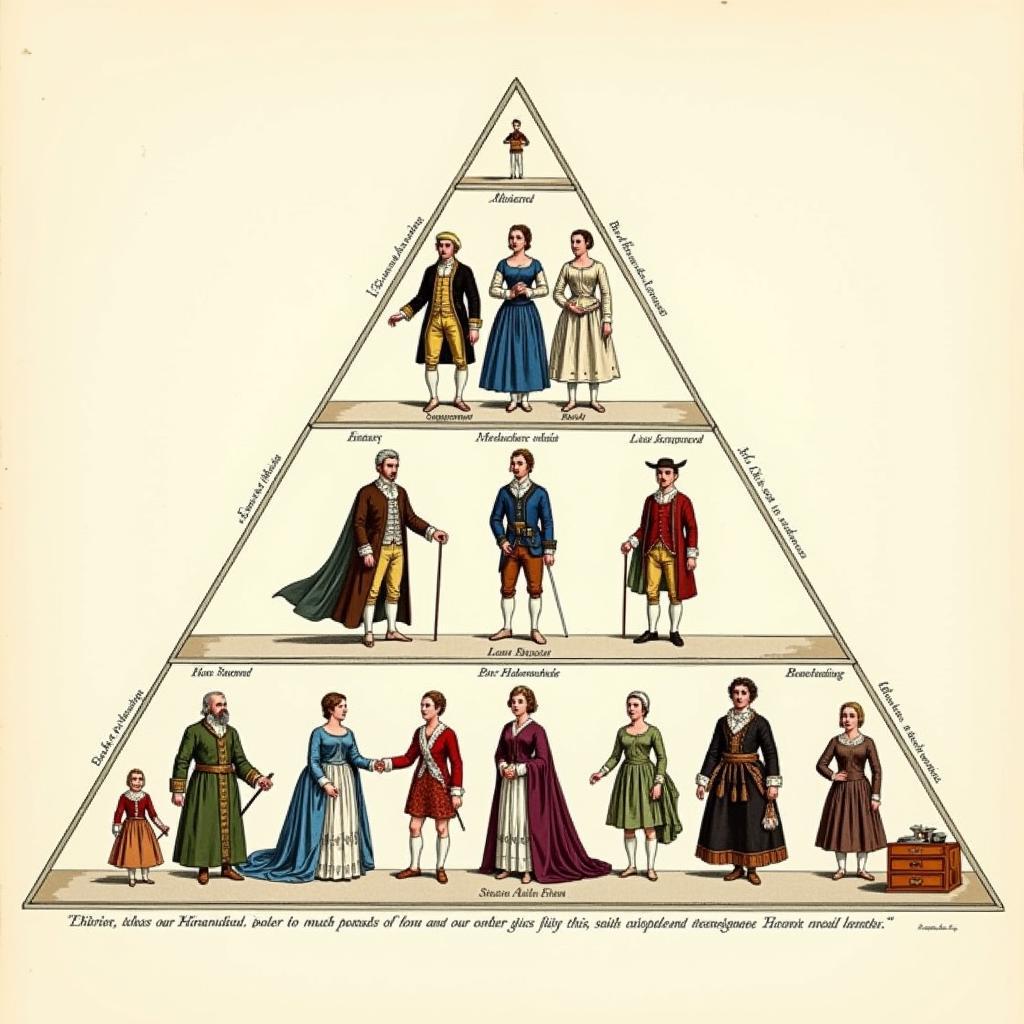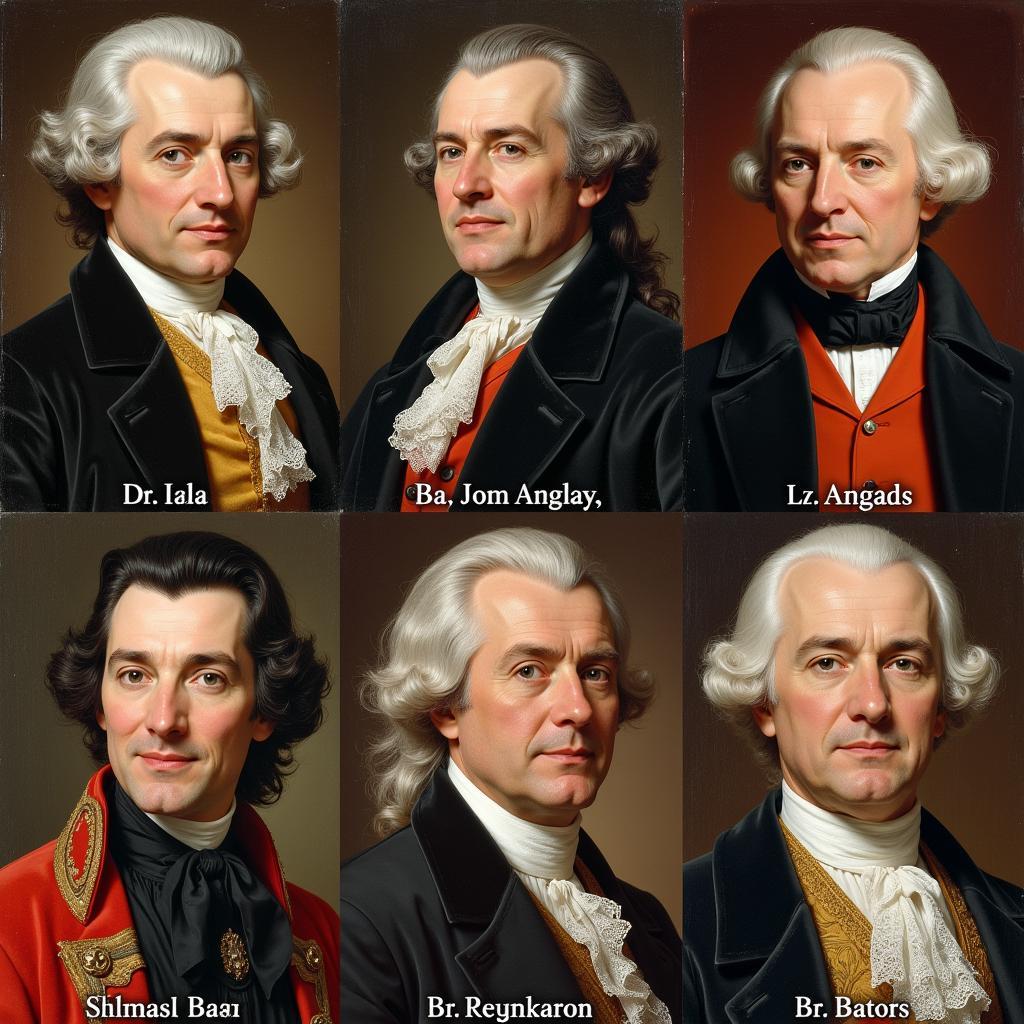The Hanoverian Society, a term often associated with the Georgian era in British history, represents a fascinating period of social and political change. This article delves into the complexities of Hanoverian society, exploring its defining characteristics, key figures, and lasting legacy.
The Social Fabric of Hanoverian Society
Hanoverian society was marked by a rigid class structure, with the aristocracy holding significant power and influence. Land ownership remained a key determinant of social standing, and the gentry played a vital role in local governance. Below them, a growing middle class emerged, fueled by burgeoning trade and industry. This period saw the rise of merchants, professionals, and skilled artisans, contributing to a dynamic and evolving social landscape. At the bottom of the social hierarchy were the working classes, often facing harsh living and working conditions. Their lives were shaped by agricultural cycles, industrial demands, and the ever-present threat of poverty.
The lives of women in Hanoverian society were largely defined by their social class. Aristocratic women enjoyed a degree of privilege but were still largely confined to domestic roles. Middle-class women often participated in family businesses and enjoyed greater social mobility. Working-class women faced the double burden of domestic responsibilities and often strenuous labor outside the home.
 Hanoverian Society Class Structure: Depiction of the hierarchical structure of Hanoverian society, showcasing the aristocracy, gentry, middle class, and working class.
Hanoverian Society Class Structure: Depiction of the hierarchical structure of Hanoverian society, showcasing the aristocracy, gentry, middle class, and working class.
Political Landscape of the Hanoverian Era
The Hanoverian dynasty’s accession to the British throne in 1714 brought about a period of relative political stability. The reign of George I and his successors saw the development of a parliamentary system with increasing power vested in the House of Commons. The rise of political parties, notably the Whigs and the Tories, shaped the political discourse of the era. The Hanoverian period also witnessed significant political events, including the Jacobite risings and the American Revolution, which profoundly impacted the British Empire and its relationship with its colonies.
 Key Political Figures in Hanoverian Society: Portraits of prominent figures like Robert Walpole, William Pitt the Elder, and King George III, highlighting their influence.
Key Political Figures in Hanoverian Society: Portraits of prominent figures like Robert Walpole, William Pitt the Elder, and King George III, highlighting their influence.
Cultural and Intellectual Currents
The Hanoverian era was a period of intellectual ferment and artistic flourishing. The Enlightenment, with its emphasis on reason and scientific inquiry, profoundly influenced intellectual thought. This period saw the rise of prominent figures like Isaac Newton and John Locke, whose ideas shaped the intellectual landscape of the era. In the arts, the Hanoverian period witnessed the development of distinct architectural styles, including Georgian and Neoclassical. Literature flourished, with writers like Jonathan Swift and Samuel Johnson contributing to the rich literary tapestry of the time.
“The Hanoverian period represents a crucial juncture in British history, marked by a dynamic interplay of social, political, and intellectual forces,” states Dr. Amelia Worthington, Professor of 18th-Century British History at the University of Cambridge.
The Legacy of Hanoverian Society
The Hanoverian period left an enduring legacy on British society and the world. The development of parliamentary democracy, the expansion of the British Empire, and the flourishing of intellectual and cultural life all contributed to shaping the modern world. The Hanoverian era also laid the groundwork for many of the social and political challenges that would be addressed in subsequent centuries.
“Understanding the Hanoverian period is crucial for grasping the roots of modern Britain,” adds Dr. David Ashford, historian and author of “A Social History of Hanoverian Britain.” “The period’s complexities and contradictions offer invaluable insights into the forces that shaped the nation we know today.”
Conclusion
The Hanoverian Society, with its intricate social hierarchy, evolving political landscape, and vibrant cultural scene, stands as a pivotal period in British history. Exploring the nuances of this era provides valuable insights into the forces that shaped the modern world. Further research into the Hanoverian Society can enrich our understanding of the past and inform our perspectives on the present.
FAQ
- What is the Hanoverian Society? The Hanoverian Society refers to British society during the reign of the House of Hanover (1714-1901).
- Who were the Hanoverians? The Hanoverians were a German royal dynasty that ruled Great Britain and Ireland.
- What were some key features of Hanoverian society? A rigid class structure, developing parliamentary democracy, and the Enlightenment’s influence.
- What was the significance of the Hanoverian period? It was a period of political stability, imperial expansion, and cultural flourishing.
- How did the Hanoverian era impact the modern world? It shaped the development of parliamentary democracy and influenced the course of the British Empire.
- Where can I learn more about Hanoverian Society? Numerous books, articles, and online resources are available for further study.
- What is the connection between the Hanoverian period and the Georgian era? The reigns of the first four Hanoverian monarchs are often referred to as the Georgian era.
For further assistance, please contact Phone Number: 02043854663, Email: [email protected] Or visit us at: Khu 34, Bac Giang, 260000, Vietnam. We have a 24/7 customer support team.